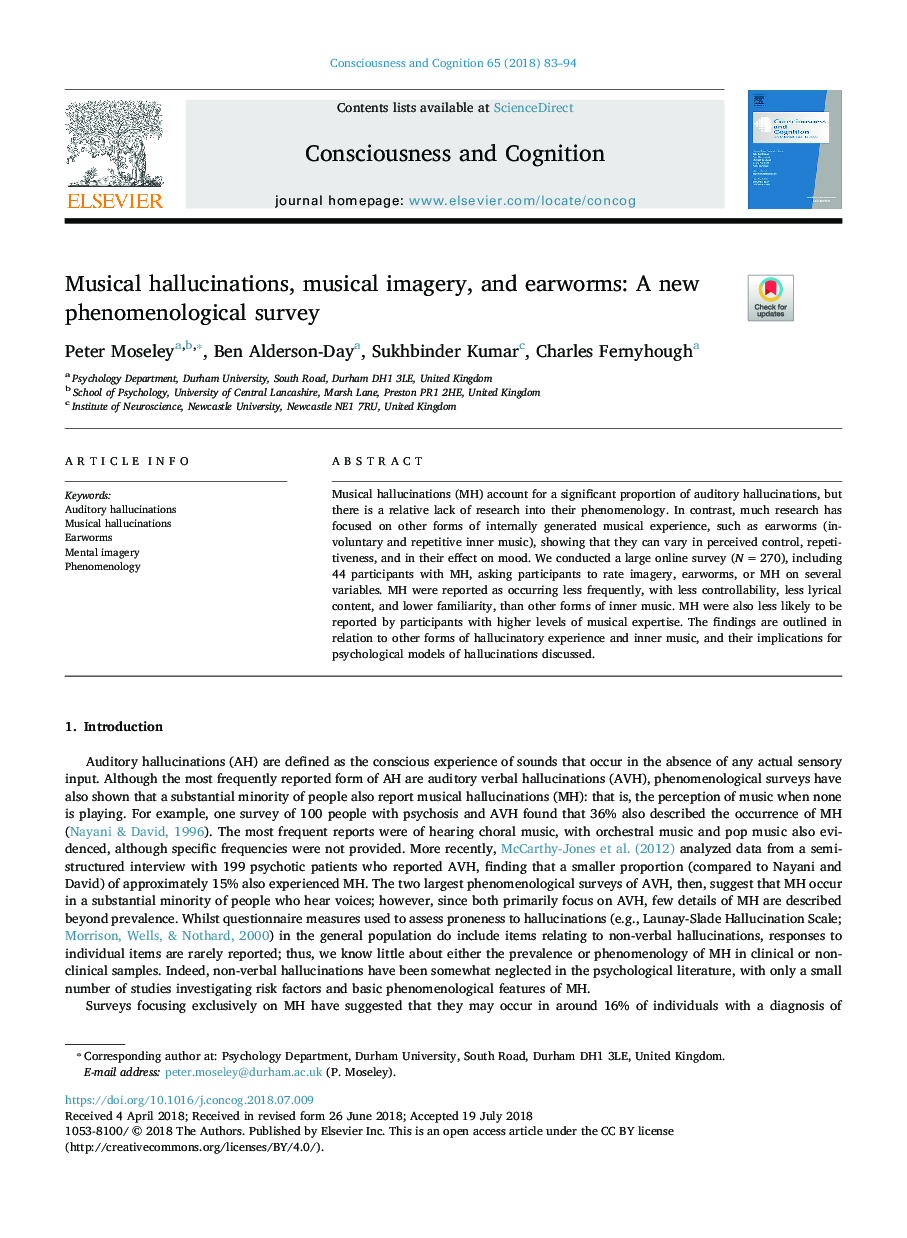| Article ID | Journal | Published Year | Pages | File Type |
|---|---|---|---|---|
| 7287741 | Consciousness and Cognition | 2018 | 12 Pages |
Abstract
Musical hallucinations (MH) account for a significant proportion of auditory hallucinations, but there is a relative lack of research into their phenomenology. In contrast, much research has focused on other forms of internally generated musical experience, such as earworms (involuntary and repetitive inner music), showing that they can vary in perceived control, repetitiveness, and in their effect on mood. We conducted a large online survey (Nâ¯=â¯270), including 44 participants with MH, asking participants to rate imagery, earworms, or MH on several variables. MH were reported as occurring less frequently, with less controllability, less lyrical content, and lower familiarity, than other forms of inner music. MH were also less likely to be reported by participants with higher levels of musical expertise. The findings are outlined in relation to other forms of hallucinatory experience and inner music, and their implications for psychological models of hallucinations discussed.
Related Topics
Life Sciences
Neuroscience
Cognitive Neuroscience
Authors
Peter Moseley, Ben Alderson-Day, Sukhbinder Kumar, Charles Fernyhough,
